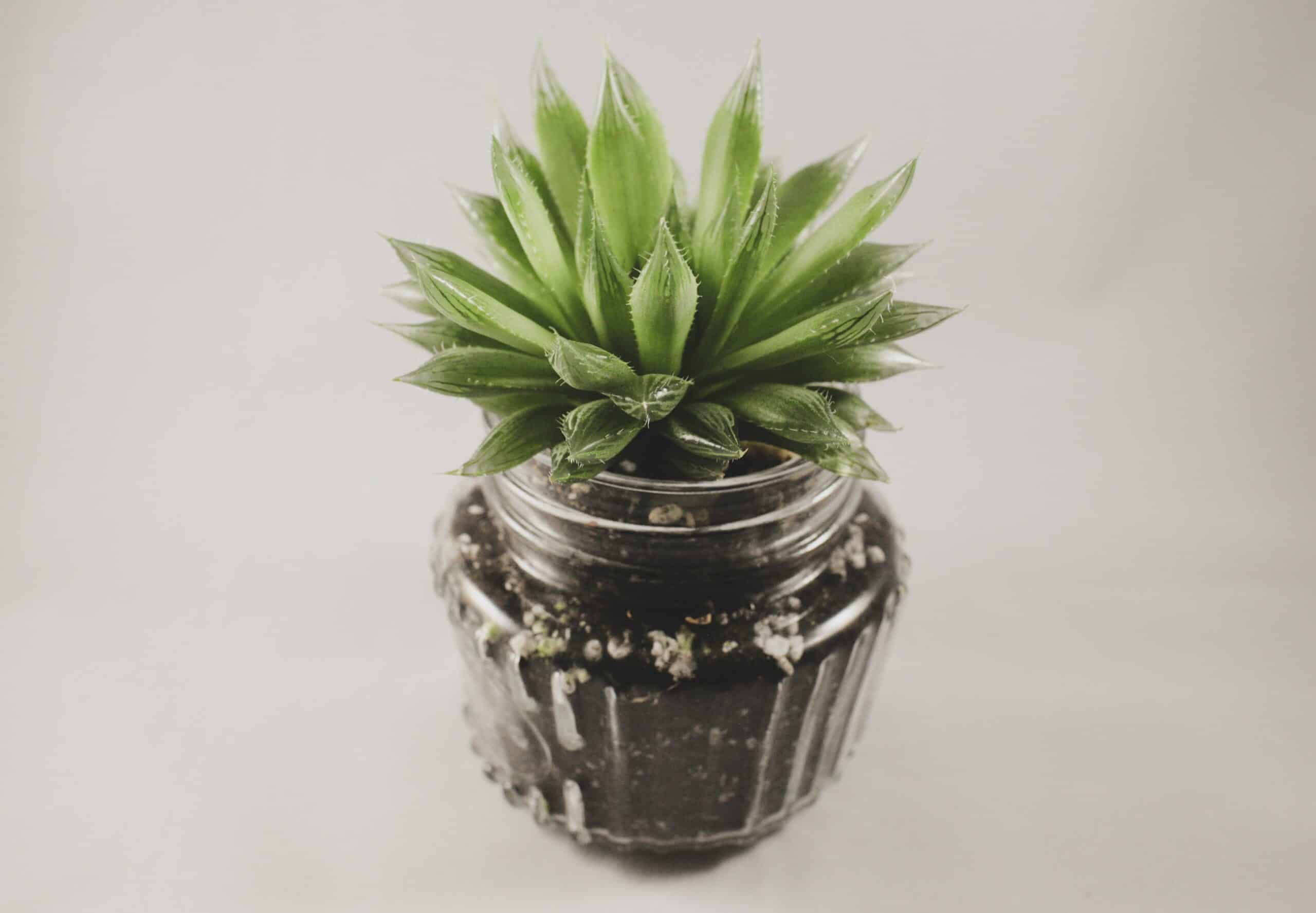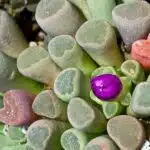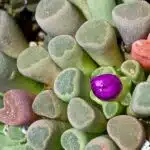Have you ever wanted to add a bit of extra life and color to your home? Haworthia succulents are the perfect way to do just that. These unique looking plants are both low maintenance and beautiful, making them ideal for any home. Not only that, but taking care of Haworthia succulents will give you a sense of accomplishment as you watch your little plant thrive!
In this guide, we’ll cover everything you need to know in order to provide the best care possible for your Haworthia succulent. From what type of soil is best for these plants, to how much water they need and how often they should be fertilized; we’ll go over all the basics here. We’ll also discuss the different types of Haworthia succulents available and their various characteristics so that you can ensure you get exactly what it is you’re looking for.
Finally, we’ll take a look at some tips on how to keep your Haworthia succulent healthy and happy so that it can thrive in whatever environment it’s placed in! So if you’re ready to learn more about these amazing plants and how to care for them properly, read on!
What Is A Haworthia?
Haworthia is a genus of small, succulent plants that can be found in the deserts of southern Africa. With over 150 species, it’s no surprise that these plants remain popular as ornamental houseplants. In fact, more than 70 million haworthias are sold around the world each year!
When caring for a haworthia, you’ll want to make sure you select the right type for your garden. While some varieties prefer full sun exposure and dry soil, others thrive in partial shade and moist soil. Haworthias also come in an array of colors and patterns, including stripes and spots. With so many options available, it can be difficult to choose which one is right for you.
To help make your decision easier, consider your climate and the amount of light your garden receives. Once you know what type of haworthia would fit best into your environment, you can narrow down your choices by focusing on color preferences or size considerations. Taking the time to find the perfect plant for your garden will ensure that your haworthia will stay healthy for years to come!
Selecting The Right Haworthia For Your Garden
When selecting the right Haworthia for your garden, there are a few things to consider. First, it’s important to understand the size and shape of these plants. Haworthias generally stay small and compact in size, but some varieties can grow up to 12 inches (30 cm) tall with sprawling leaves. That means you’ll need to select a variety that is best suited for your space.
Second, consider the lighting requirements for each variety. While some Haworthias prefer bright light to full sun, most varieties do best when they have access to indirect sunlight. This makes them an ideal choice for those who want an easy-care succulent without having to worry about intense direct sunlight.
Finally, take into account the color and texture of each type of Haworthia. Some varieties feature dark green foliage with raised bumps and ridges on the exterior surface; others have deep purple or almost black leaves with white markings; and still others have attractive variegated foliage with splashes of pink or yellow mixed in. Choosing the right variety can be a fun way to add unique color and texture to any garden!
Planting Haworthia
Planting Haworthia succulents is a simple and straightforward process. Unlike other plants, the soil for Haworthia does not need to be particularly nutrient-rich or amended. You’ll want to use a potting mix of equal parts potting soil, sand and perlite for best results. Additionally, make sure to select a pot with drainage holes in the bottom so that the Haworthia’s roots don’t get waterlogged.
Once you have the right potting mix and container, it’s time to plant your Haworthia! Gently remove the plant from its nursery pot and place it on top of your prepared soil. Make sure that you set it at the same depth as it was previously planted – any deeper may cause root rot. If you plan on planting multiple Haworthia together in one container, make sure there is enough space between them for growth.
Now that your Haworthia is planted, it’s time to give it some light! Depending on where you live, the amount of sunlight your succulent will require will vary greatly. It’s important to understand how much sun exposure your plant needs so that you can ensure its long-term health and growth. Let’s take a look at what amount of sunlight is ideal for optimal Haworthia care.
Sunlight Requirements For Haworthia
The sun is a basic necessity for living things, and plants are no exception. Could it be true that haworthia succulents can survive on as little sunlight as some of the toughest species of cacti? Investigating this theory paints a vivid image in our minds of these hardy plants withstanding the most difficult conditions while still thriving.
When it comes to haworthias, they will appreciate a bright spot with indirect sunlight. This means that they should not be placed in harsh direct light, as this could cause them to burn. On the other hand, too little light could result in slower growth and weaker coloration. It’s best to choose an area where your succulent can receive some morning or late afternoon sun, but be shaded during the hottest part of the day.
Your haworthia thrives when you give it just enough sunshine. Placing it in a location with bright indirect light allows your plant to stay hydrated and healthy without worrying about burning from too much sun exposure. With proper care and attention, your succulent can easily adjust to its new environment and thrive!
Now that we know what kind of sunlight requirements haworthias need to stay healthy, let’s take a look at soil needs for these unique plants.
Soil Requirements For Haworthia
When it comes to soil for haworthia, there are several important factors to consider. It’s essential to provide this succulent with a well-draining soil that will help prevent root rot and other issues. Here are five key considerations when choosing the best soil for your haworthia:
Soil mix: A good mix should be composed of equal parts potting soil, coarse sand, and perlite or pumice. This ensures optimal drainage and aeration so your plant can thrive.
pH balance: Haworthia prefers slightly acidic to neutral soil with a pH level between 6 to 7.5. You can test the soil’s acidity before planting by using an inexpensive pH meter or strips available at most garden centers.
Nutrients: Fertilizers should only be used sparingly as haworthia succulents do not require much additional nutrient supplementation beyond what is already provided in the soil mix. If you decide to fertilize, use a balanced liquid fertilizer that is diluted according to package instructions and applied every couple of weeks during the growing season.
Air circulation: Haworthia does best when planted in porous soils that allow for plenty of air circulation around the roots of the plant. This helps promote healthy growth and prevents root rot from occurring due to overly wet conditions in the soil mix.
Mulching: Adding a thin layer of mulch on top of your haworthia’s soil can help keep its roots cool during hot summer days and also helps retain moisture for optimal growth conditions year-round.
By considering these five elements when choosing a soil for your haworthia, you can ensure it has all the necessary nutrients and air circulation needed to thrive in your home garden or landscape! With proper care and attention, your succulent should remain healthy and happy for years to come – now let’s move on to watering requirements…
Watering Haworthia
As with any succulent, watering your Haworthia is important to keep it thriving. For this type of plant, you’ll want to water it about once a week or when the soil has dried out completely. When you do water, make sure to soak the soil thoroughly but avoid overwatering. This means that if you don’t see runoff from the pot’s drainage holes, then you’ve given enough water.
It’s also important to note that Haworthia can be sensitive to too much moisture in its environment and is prone to root rot if it gets too wet. To prevent this, consider using a well-draining potting mix and make sure there are adequate drainage holes in the bottom of the pot. Watering your Haworthia on a regular basis will help ensure that it remains healthy and happy.
If you’re looking for an easy way to keep track of your Haworthia’s watering needs, try placing a timer near your plant or setting an alarm on your phone as an occasional reminder. Taking consistent care of your Haworthia will help ensure its long-term success in your garden. With just a few simple steps, you can keep your succulent happy and healthy for years to come!
Now let’s look at how fertilizing can help give your Haworthia an extra boost of nutrients for optimal growth and health.
Fertilizing Haworthia
Fertilizing haworthia is an important part of ensuring your plant not only survives but thrives. With the right fertilization regime, you can bring out the best in this remarkable succulent. Here are a few things to keep in mind when it comes to fertilizing haworthia:
Fertilization should be done once or twice a year with a liquid fertilizer that is relatively low in nitrogen and higher in potassium and phosphorus.
When applying fertilizer, use about half the amount recommended on the package for most plants, as haworthia are slow growers and do not require as much nutrition.
Make sure to water your plant before applying any fertilizer, as dry soil can burn roots if fertilizer is applied directly onto them.
Remember to always follow instructions on the packaging and never over-fertilize! Too much fertilizer can cause root burn, leading to yellowing of leaves and other issues. As long as you follow these simple guidelines, your haworthia will be happy and healthy!
Now that we’ve discussed fertilizing haworthia, let’s turn our attention to pruning these succulents back for even more impressive displays…
Pruning Haworthia
Pruning haworthia is like giving your succulent a haircut. It’s an essential part of the care and maintenance process that helps keep your plant looking its best. Here are some tips to help you get started:
- Prune away any dead or dying leaves from the base of the succulent.
- Remove any thick, woody stems that have grown too large for the pot.
- Cut off any brown, crispy tips to encourage new growth for a more vibrant look.
When pruning haworthia, it is important to use clean tools and sterilize them after each use in order to reduce the risk of infections and diseases. Make sure not to cut too much of the stem at once or else it could cause stress and damage to the plant. Additionally, be careful not to leave behind any stubs as this can lead to rot or infection.
After pruning your haworthia, take care to water lightly but regularly so the soil remains moist but not soggy. This will help stimulate healthy new growth and encourage regrowth after pruning has been done. With proper care and maintenance, you can enjoy your beautiful succulent for many years! Moving on from here, let’s talk about repotting haworthia…
Repotting Haworthia
Repotting Haworthia succulents is an important part of their care, and it can be a satisfying way to give your plant a boost. It’s best to do this at the beginning of the growing season when they’re most active. Repotting is also a smart way to prevent root rot, which can occur if the soil remains too moist for too long.
When you repot your Haworthia, choose a pot that’s slightly bigger than its current one. This will provide enough space for new roots to develop without being crowded. Make sure the container has drainage holes so excess water can escape. Also, use a well-draining mix that contains peat moss or coco coir, perlite or sand, and vermiculite or pumice.
Now comes the fun part! Gently remove the Haworthia from its old pot and inspect the roots for any signs of disease or damage. If needed, trim off dead or damaged roots before transferring it into its new pot with fresh soil. Water your succulent lightly and place it in an area with bright light but away from direct sunlight. With proper care, your Haworthia will soon become established in its new home!
It’s essential to keep an eye out for any pests or diseases that may affect your Haworthia as well. In our next section we’ll look at how to identify and deal with common problems related to this attractive succulent species.
Pests And Diseases Of Haworthia
Pests and diseases can be an issue for Haworthia succulents, as with any other plant. To keep these plants healthy, it’s important to recognize any potential problems so that they can be treated quickly. Let’s take a look at the most common pests and diseases of Haworthia.
The most common pest is mealybugs, which feed on the sap of the plant and cause yellowing or browning of foliage. Spider mites are another potential pest that can appear in large numbers and cause damage to the leaves and stems of your Haworthia. Both of these pests can be treated with insecticidal soap or neem oil.
Root rot is one of the more serious diseases that could affect your succulent, caused by overwatering or poor drainage in the soil. This can cause the roots to die off and rot away, leading to wilting and discoloration in the leaves. If root rot is suspected, move the affected Haworthia to a drier environment and reduce watering until it has recovered fully.
Taking care of Haworthia succulents will help them stay healthy and look their best over time. Prevention is always key when it comes to pests and diseases, but if you do spot any signs, treating them quickly will help minimize any lasting damage. Now let’s explore how propagating haworthia can help create new plants for your collection!
Propagating Haworthia
Propagating haworthia succulents is like a gardeners’ playground. It’s a chance to explore, create, and craft the perfect specimen. There are three main methods for propagating haworthia: division, offsets, and leaf cuttings.
Division is the simplest method of propagating haworthia. All you have to do is carefully split a mature plant into two or more sections, making sure each section has healthy roots intact. Offsets are small plantlets that form around the parent plant and can be removed with ease. And lastly, leaf cuttings allow you to grow an entirely new miniature clone from just one leaf!
Starting your own collection of these fascinating plants is easy and rewarding! As a gardener, it’s essential to practice patience and take your time when propagating haworthia; but once you’ve mastered this process, there’s no limit to how many beautiful specimens you can create. With careful attention and dedication, soon enough you’ll have your very own mini-forest of succulents!
From propagation we move on to winter care of Haworthia – an important part of keeping your succulent garden thriving year round.
Winter Care Of Haworthia
Winter can be a difficult time for succulents, particularly those that are sensitive to the cold. The beautiful and resilient Haworthia succulent is no exception, requiring special attention during this season to ensure it continues to thrive. Caring for them in the winter takes extra effort, but with some knowledge and preparation, you can keep your Haworthia healthy and happy.
As temperatures drop, Haworthia plants need extra protection from the elements. Place them in pots on shelves or stands where they won’t get as much direct sunlight or be exposed to more extreme temperatures. If possible, move them indoors or into a greenhouse during the winter months. Additionally, reducing waterings will help protect Haworthia from frost damage; only water when the top two inches of soil is dry and make sure to use room temperature water.
Fertilizing is also important during wintertime; although you may not need to fertilize as often, a balanced fertilizer every few weeks will provide all the nutrients your Haworthia needs to stay healthy and vibrant through the colder months. With these steps in mind, you’ll be well on your way towards providing your Haworthia with the best care it needs for wintertime!
With proper preparation and maintenance you can ensure that your beloved Haworthias remain healthy throughout the colder months – now let’s turn our attention to companion planting with your succulents!
Companion Planting With Haworthia
“The best things come in small packages”, and this adage certainly rings true when it comes to haworthia plants. A type of succulent, these lovely little plants make for excellent companions to any garden, providing a range of interesting shapes and textures. In this article, we’ll focus on companion planting with haworthia: how to do it, what benefits it offers, and some tips for success.
Companion planting is a great way to get more out of your garden. By selecting the right mix of plants, you can ensure that all your plants are healthy and happy, as well as enjoy the aesthetic benefits of variety. Haworthia makes an excellent companion for many other types of succulents – there’s no need to worry about overcrowding or competition for resources!
When planning where to place your haworthia, start by considering the environment around them. Take into account the amount of light they receive and the type of soil they’re in; this will help you decide which other plants will be best suited alongside them. Just remember that most succulents prefer bright light and well-draining soil in order to thrive – so keep that in mind when pairing them with other plants!
Haworthia is a great choice for those looking to add visual interest and texture to their garden without having to spend too much time caring for it. Plus, their low maintenance requirements mean that even beginner gardeners can join in on the fun! With just a bit of research and some careful consideration of their environmental needs, you can create a beautiful living landscape with haworthia at its center.
Uses For Haworthia
Haworthia succulents are a unique and beautiful addition to any plant collection. They offer diverse uses, from adding vibrant textures and colors to your garden to providing an array of healing benefits. With their low-maintenance care requirements, haworthia can be used in both indoor and outdoor settings with ease.
Like a diamond in the rough, haworthia can add sparkle and life to virtually any space. Whether you’re looking for an interesting centerpiece or something to liven up the corner of your home, these plants are sure to provide just the right touch of beauty. Plus, their easy care means that you can use them even if you don’t have a green thumb!
As well as being eye-catching, haworthia also offer powerful healing properties. Some believe that this plant has spiritual significance due to its unique shape, while others tout its ability to help heal emotional wounds. Whatever your reasons for wanting one of these plants in your home, they certainly make a great addition – both aesthetically and spiritually.
Haworthia can be an interesting way to bring some new life into your space without a lot of fuss or effort. With their vibrant colors and healing powers, what’s not to love? It’s no wonder why this succulent is such a popular choice among gardeners everywhere!
Tips For Growing Haworthia Successfully
Planting any type of succulent can be both rewarding and challenging. With Haworthia, in particular, there are some specific considerations that need to be taken into account for successful growth. Here are some tips for cultivating a thriving Haworthia collection.
To start, it is important to understand the concept of ‘right plant, right place’. Knowing which types of Haworthia will grow best in your environment is key. After all, not all plants thrive under the same conditions. So, for successfully growing Haworthia there are several things to consider:
- Select a potting container with drainage holes;
- Provide bright light but avoid harsh direct sunlight;
- Water only when the soil has completely dried out; and
- Fertilize during spring and summer months with a balanced fertilizer.
In addition to these basic tips, it’s also important to remember that Haworthia have slow growth rates and may take years before they reach their full potential. For this reason, patience is essential when caring for them. It’s also helpful to periodically check for pests like mealybugs or aphids, as these can cause serious damage if left untreated. With consistent care and attention, you’ll soon find yourself with a flourishing collection of beautiful Haworthias!
Frequently Asked Questions
What Temperature Should I Keep My Haworthia In?
It’s time to get your green thumb on for the Haworthia succulent! This beautiful, hardy plant is sure to bring life and joy to any home. But with any living thing, you’ll want to make sure you’re giving it the proper care and attention it needs. One of the most important aspects of Haworthia care is temperature. Picture a warm, sunny beach; that’s what we want your Haworthia to experience!
When it comes to temperature, Haworthias thrive best in temperatures between 65-75 degrees Fahrenheit. Keep the temperature steady and consistent to ensure the health of your plant. To achieve this, here are four tips:
- Keep an eye on your thermostat: Check your thermostat throughout the day and night, making sure it doesn’t dip too low or rise too high.
- Place next to an open window: To take advantage of natural sunlight and fresh air, position your Haworthia near an open window during cooler months.
- Invest in a dehumidifier: High humidity can be detrimental for Haworthias; investing in a dehumidifier can help keep that moisture level down.
- Consider relocating if necessary: If you think the temperature in your home or office is not conducive for growing a healthy Haworthia succulent, consider moving it elsewhere.
By following these simple steps, you’ll be well on your way to creating a tranquil oasis for your beloved plant! And with its vibrant colors and unique texture, you’ll have something special that adds life and character wherever it goes – just like bringing back a souvenir from that imaginary beach mentioned before!
How Often Should I Fertilize My Haworthia?
The pruned leaves of a haworthia succulent serve as an allegory for the care we must give our plants. The delicate, intricate leaves represent the attention that needs to be given in order to maintain a healthy plant. In order to keep it flourishing with life and color, one must remember to fertilize their haworthia periodically.
Fertilizing is essential for keeping your haworthia healthy and vibrant. Depending on the type of soil you are using, you should fertilize every two to four weeks during its growing season. Use a liquid fertilizer diluted to half strength and spray around the base of the plant. Be sure to avoid getting any fertilizer directly on the leaves as it can burn them or cause discoloration.
When tending to your haworthia, it’s important to also consider other factors like temperature and water quantity. Keep your succulent in temperatures between 60-80°F (16–27°C). Water your haworthia deeply but infrequently; allow the soil dry out completely between waterings. By understanding how often and when you should fertilize alongside other factors such as temperature and water quantity, you can ensure a happy, thriving haworthia plant!
Is Haworthia Toxic To Pets?
It’s important to know if your beloved house plants may pose a risk to your four-legged family members. According to the American Society for the Prevention of Cruelty to Animals (ASPCA), nearly 90% of households in the United States have at least one pet. With such a high percentage, it’s essential that pet owners are aware of any potential hazards their furry friends may come across in the home.
So, is Haworthia toxic to pets? Thankfully, no. These succulents are not known to be hazardous when ingested and can make great additions to your household without worry. Here are some things you should keep in mind when having Haworthia around your pets:
• Make sure that any Haworthia you bring into your home isn’t sprayed with any pesticides or fungicides. • Provide plenty of space in between plants so curious pets don’t get too close and potentially knock them over by accident. • If you notice any signs of irritation on your pet, take them to a veterinarian right away just in case they did ingest some plant matter.
Haworthia is an easy-to-care-for succulent that doesn’t require much from its caretaker, making them ideal for busy pet owners looking for low maintenance greenery! Plus, with their unique patterns and textures, these plants can add a touch of personality and charm to any room without putting our furry friends at risk.
Can I Propagate Haworthia From Cuttings?
When it comes to propagating Haworthia, cuttings are an ideal way to get new plants! While it may seem intimidating to replicate these unique succulents, there is much joy to be found in watching them grow and thrive. I’m here to show you how easy it can be with a few simple steps.
First, you’ll need a healthy Haworthia that has been growing for at least three months. Cut off a leaf or two from the bottom of the plant, making sure that each cutting contains some of the ‘mother’ plant’s roots. Place your cuttings on dry soil in bright but indirect light and water lightly every week or so. With some patience and care, you should soon start seeing new leaves sprouting from the cuttings!
Here are five tips for successful Haworthia propagation: • Make sure your cuttings contain some of the mother plant’s root system • Place in bright but indirect light • Water lightly once per week • Give your cuttings time – it could take several weeks before new growth begins • Avoid direct sun exposure as this can burn the young leaves
Propagating Haworthia from cuttings is an enjoyable experience that yields beautiful results! With just a bit of effort and dedication, you’ll have plenty of new succulents to share with friends and family. So don’t hesitate – give it a go today and watch your Haworthias flourish!
Are Haworthia Easy To Grow Indoors?
It’s amazing how quickly something can change with just a little bit of dedication. You may be wondering if Haworthia succulents are easy to grow indoors. Well, it’s absolutely possible! Growing these beautiful plants in your home is totally doable, and here are the reasons why:
Firstly, Haworthia succulents don’t require a lot of special attention or care. In fact, they thrive in dry conditions and don’t need a lot of water. They also don’t need much light, so they can be placed in areas that receive indirect sunlight or even artificial lighting. And lastly, they are very low-maintenance and don’t require any pruning or trimming to stay healthy.
On top of that, Haworthia succulents are incredibly hardy plants and can tolerate a wide range of temperatures and humidity levels. So even if you live in an area with extreme weather conditions, these plants should still do well indoors! Plus, they come in different colors and sizes which makes them perfect for adding some visual interest to any room!
All things considered, growing Haworthia succulents indoors is definitely worth considering. With the right conditions and enough effort put into caring for them correctly, you can create an amazing indoor display that will not only look great but also help purify the air inside your home. So why not give it a try?
Conclusion
The Haworthia succulent is a beautiful and low-maintenance plant that makes an excellent addition to any home. Its easy care requirements make it an ideal choice for beginner gardeners, as well as experienced growers. With the proper temperature, light and water, Haworthia can thrive in almost any environment. Fertilizing regularly and propagating from cuttings are great ways to keep your plant healthy. Additionally, Haworthia is safe for pets, so you don’t have to worry about your furry friends getting hurt.
Like many things in life, caring for Haworthia can be likened to a journey – one that requires dedication and patience. Each step will bring you closer to understanding how best to care for these lovely plants and reap the rewards they bring with them. With the right approach and attention, these succulents can transform any space into something special. It’s no wonder why they remain so popular among both novice and experienced gardeners alike!
In conclusion, Haworthia are an incredibly rewarding plant to grow. They require minimal effort but offer maximum beauty in return – making them a great choice for anyone looking for living art in their home or garden. With careful attention and regular maintenance, you can ensure that your Haworthia will thrive for years to come!





























